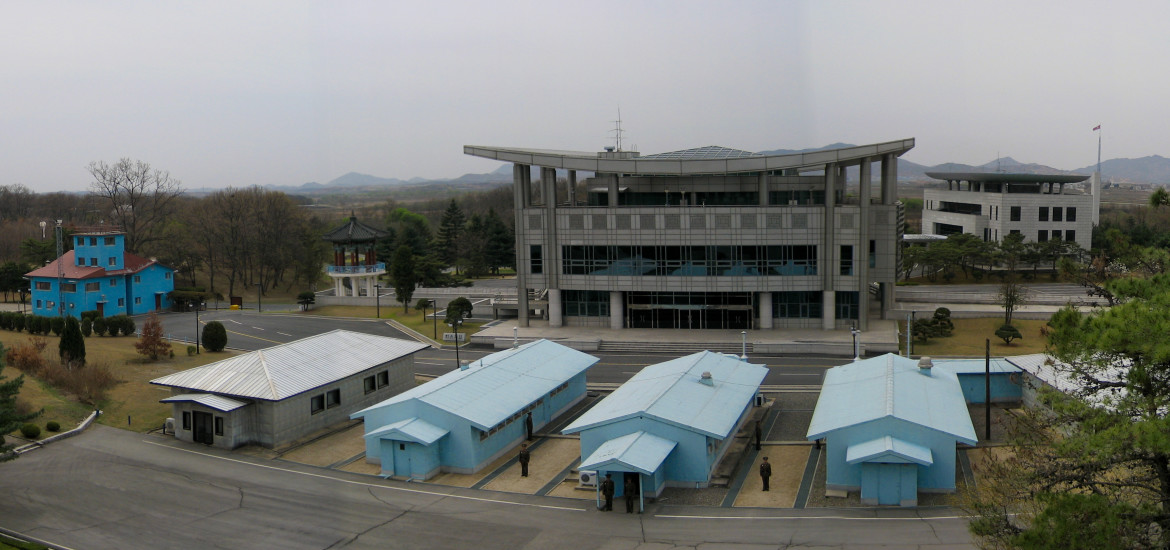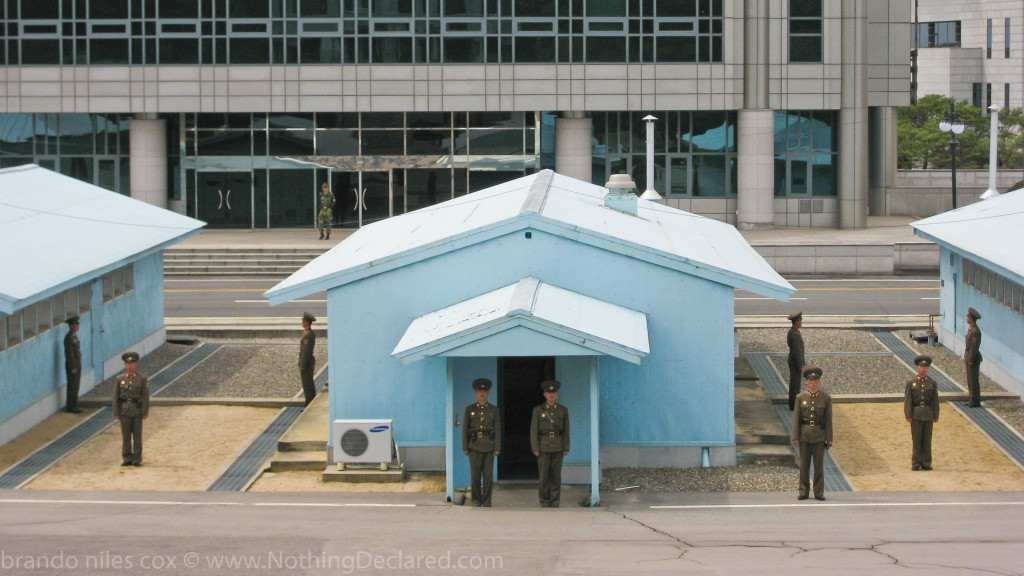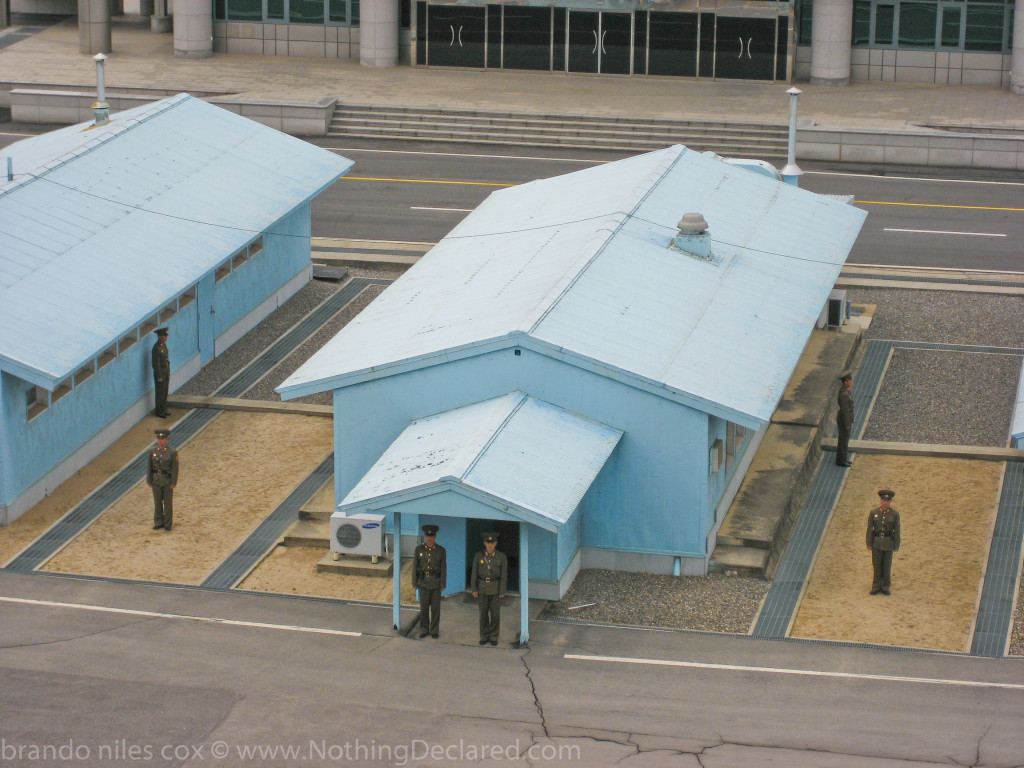North Korea, a trip from Pyongyang to the DMZ
North Korea. The most isolated country exists in a world of its own. However, lets back up a bit. In 2003 I took my first solo trip to South Korea and somewhere along the way discovered my passion for conflict resolution. My trip to South Korea was my first time travelling alone....something I never realized until writing this post. Its significance had never occurred to me. Looking back now, this is a vivid example how powerfully invigorating solo journeys often are.
I visited Seoul, ignoring the travel warnings caused by North Korea’s recent missile tests and the escalating tension. While on a Study Abroad trip in Japan everyone worried about the news from the nearby Korean Peninsula. I hadn't traveled far outside my comfort zone but something drove me to book my plane ticket nonetheless. Arriving in Seoul I was hopelessly lost searching for my "yeogwan" (Korea's version of whatever accommodation is cheaper than hostels.) A beautiful local girl befriended me as I was wandering around, and we spent a couple hours searching for my hidden guesthouse. Along the way I learned that her family was separated by the 28th parallel; she had never met her uncle who still lived in North Korea. It fascinated me that a country could be so torn and divided. Competing ideologies had divided a peninsula of people wanting to live their lives in peace. I vowed to return one day on the other side.
In 2007, I was lucky enough to be in the first group of Americans to visit North Korea since Madeleine Albright’s 2000 visit. The country maintains a tight choreography for its visitors. We left Pyongyang one morning and began our journey south on empty highways towards the DMZ. It was a journey I had anticipated for 5 years. One I was never too sure would even happen in my lifetime. Along the way we stopped at various "landmarks": an arch over the highway, a gift shop, some museums. It was all very surreal.

Since leaving that morning we drove for over 6 hours and never saw another car on the road. The highways and the city were completely devoid of cars. ZERO. The North Koreans mentioned that it was a Sunday? I'm not sure they understood this wasn't really an explanation. The reality was that cars were a luxury that only the elite owned. At one point we stopped at a roadside "shop and restaurant." We were clearly the day's only intended visitors, as our meals were already prepared in advance. I wandered around the shop and marveled at the items the reclusive regime thought I would be interested in. Interestingly enough, I found a treasure which I still hold dear to my heart: a small handmade wooden house complete with intricately carved details--a dog, trees, a fence, water well, and even a doghouse. When I asked about the house she seemed surprised and wiped a layer of dust away as she took it from atop the shelves. I bought it for $6.

Moving further south towards the DMZ I passed time looking for hidden army pillboxes and chatting with the North Korean Government minder assigned to me. I played him music from my MP3 player and sometimes he would even half-interestedly join in, helping point out the hidden tanks and army placements. Reaching the border area, we were taken through several museums which mostly covered the war, the DMZ, and of course the American Imperialists. You could say it bordered on humorous. Their tour and speeches were clearly rehearsed for groups that were NOT comprised entirely of Americans. The tour guides continued on with a bit of a bashful laugh each time they mentioned the "evil imperialist Americans."

Being the first Americans to visit North Korea in 6 years, we had attracted a pretty high level of interest within their Government. During our day spent at the DMZ, we met many high ranking North Korean Generals. They all seemed genuinely friendly and interested to speak with us. Having visited the South Korean DMZ 5 years earlier in 2003, there was clearly a different level of attention and participation between the two governments. In South Korea the tour was run by a private country; the military was seen but there was no interaction. On our South Korean tour from Seoul strategic military features had been pointed out. Bridges were extremely thick, as they were wired with explosives in case of an invasion from the North. Minefields were clearly marked. South Korean and American Military bases were pointed out and talked about. On the North Korean side the heavy military presence wasn't mentioned. Not surprisingly, the North Korean side contained A LOT of propaganda and a lot less conciliatory attitude between the countries. We were able to see the original signed armistice agreements.

Finally, we arrived at the highlight of our trip to the 28th parallel, the Joint Security Area. This is an area within the DMZ which houses the UN blue buildings nicknamed "Conference Row." Running through the middle of these buildings, the Military Demarcation line can be seen dividing North and South Korea.

Surprisingly, we were allowed free reign to take photographs wherever we wanted. This is strictly forbidden when visiting the 28th parallel from the South Korean side. We casually engaged in spirited conversations with the visiting North Korean Generals. Strangely, despite being "bitter enemies," everyone seemed to be having a great time.

I will never forget the priceless looks we received from the US soldiers stationed in the South when we waved from the North. Entering the blue UN buildings in the Joint Security Area was exhilarating. Ironically, this area was closed due to the political tensions when I visited the DMZ from the South 5 years earlier.












